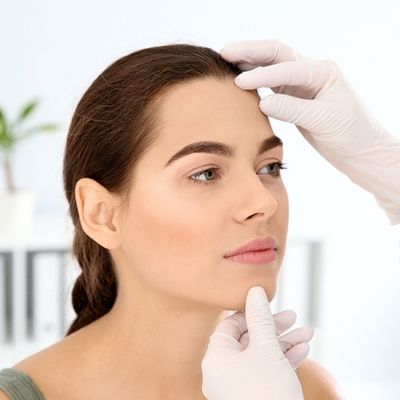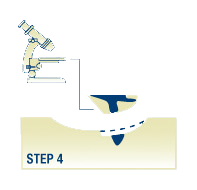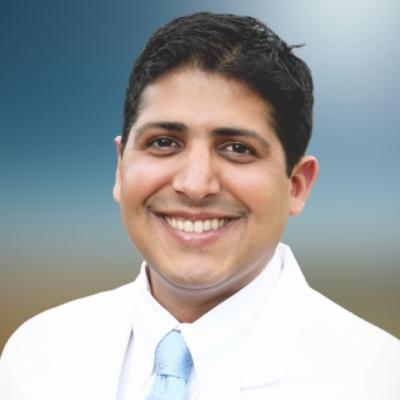Surgical Dermatology
Dr. Patel is an ACMS (American College of Mohs Surgery) fellowship-trained skin cancer and reconstructive surgeon.


Dr. Raj’s Personal Description of Skin Cancer:
“I think of skin cancer like a weed in your garden.”
The first step is to recognize cancer and determine a diagnosis through what is called a BIOPSY. Once we determine the specific type of cancer we can determine if the MOH’s surgery is the best option. Now although the biopsy may have removed the visible portion of the tumor, like running a lawnmower over a weed, the roots of cancer persist and will continue to grow unless removed. MOH’s surgery is the most advanced technique to remove skin cancer and advantages include:
True MOHS
Smallest quantity of skin removed
100% of the edges are checked
You will know you are skin cancer free that day
Cosmetic Repair or Reconstruction can follow immediately after your surgery on the same visit because we are confident that all the cancer is out.
No sedation or general anesthesia
What is MOHS Surgery?
MOHS micrographic surgery is the most effective and advanced technique for removing skin cancer.
01
The roots of skin cancer may extend beyond the visible portion of the tumor. If these roots are not removed, cancer will recur. A surgery starts with the American College of Mohs Surgery (ACMS) specialist examining the visible lesion and planning what tissue to remove. The patient then receives local anesthesia, and the Mohs surgery begins.
02
The surgeon removes the visible portion of the tumor using careful surgical techniques.
03
The ACMS surgeon next removes a deeper layer of skin and divides it into sections. With the help of technicians, the surgeon then color-codes each of these sections with dyes and makes reference marks on the skin to show the source of the sections. A map of the surgical site is then drawn to track exactly where each small portion of tissue originated.
04
In a laboratory, the surgeon uses a microscope to examine the undersurface and edges of each section of tissue in search of evidence of remaining cancer.
05
If the surgeon finds cancer cells under the microscope, he or she marks their location on the “map” and returns to the patient to remove another deeper layer of skin — but only from precisely where the cancer cells originated. This method ensures that the Mohs surgery results in the smallest scar possible.
06
The removal process stops when there is no longer any evidence of cancer in the surgical site. Because Mohs surgery removes only tissue containing cancer, it ensures that the maximum amount of healthy tissue is kept intact.
At this point, the surgeon discusses reconstruction options, should they be required, and then post-operative care. Mohs surgery recovery tends to be easily manageable because of the use of local anesthesia and the careful surgical techniques.
Frequently Asked Questions
What is skin cancer?
Skin cancer refers to the abnormal, uncontrolled growth of skin cells. According to the American Academy of Dermatology, one in five people will develop skin cancer in their lifetime. Risk factors include pale skin, family history of skin cancers, being over 40 years old, and regular sun exposure. Fortunately, skin cancer is almost always curable if detected early and treated early.
The most common skin cancers are basal cell carcinoma, squamous cell carcinoma, and melanoma. Most skin cancers, 80-85% are basal cells, affecting the uppermost layer of the epidermis. Squamous cell carcinoma occurs in 10% of all skin cancer patients and affects cells in the middle layer of the epidermis. The most serious, and most rare, of skin cancers are melanomas. Melanomas are dangerous since they can metastasize quickly. Melanomas are the leading cause of skin cancer deaths.
Skin cancers vary in shape, color, size, and texture, so any new, changed or otherwise suspicious growths or rashes should be examined immediately by a physician. Early intervention is essential to preventing cancer from spreading.
Depending on your skin cancer, various treatment recommendations will be discussed along with cure rates and cosmetic outcomes. Many of these treatments have high cure rates, but Mohs micrographic surgery uniformly produces the highest success rate, especially for the most difficult tumors. Work with Dr. Patel and your team at True Dermatology to determine which is the best treatment method is for you.
Why does my skin cancer need MOHS Surgery?
Mohs surgery has the highest cure rate (up to 99%) for nonmelanoma skin cancers, such as basal cell carcinoma and squamous cell carcinoma. It is appropriate for most skin cancers and especially suitable for skin cancer that:
• Is in an area where it is important to preserve healthy tissue for best functional and cosmetic results
• Was treated previously and has come back
• Is located near scar tissue
• Is large, greater than 1 cm in diameter
• Does not have clearly defined edges
• Is growing rapidly or uncontrollably
• Is of an aggressive subtype (i.e., sclerosing or infiltrating basal cell carcinoma)
• Develop in immunocompromised patients
What is the ACMS Difference?
Fellowship training programs are designed to impart experience and judgment to each graduate. By design, these programs are comprehensive and rigorous because skin cancer itself occurs in a diversity of forms, degrees, and areas of the body. To complete an ACMS-approved fellowship, a physician must:
- Participate in a minimum of 500 Mohs surgery cases
- Learn to accurately interpret slides of tissue samples that have been removed during Mohs surgery
- Perform a wide breadth of reconstructions, ranging from simple closures to complicated multi-step repairs
Because fellows-in-training undergo training over months, they gain a breadth of exposure – under the guidance of a qualified Mohs surgeon – that includes rare tumor pathology, difficult tumor locations, and complex wound reconstruction. This fellowship training provides a depth of experience unmatched by other Mohs programs
What is skin reconstruction?
Once cancer has been removed, reconstruction for optimizing the final functional and cosmetic result becomes the highest priority. Dr. Patel will explain options for repair of the wound, including natural healing, linear closure, or using a skin flap or graft, and will be completed in our office typically in the same visit. Generally, post-surgical scar improves with time. The team at True Dermatology are experts in reconstruction and aesthetics and are available for you throughout the healing process to discuss any concerns that may arise.

